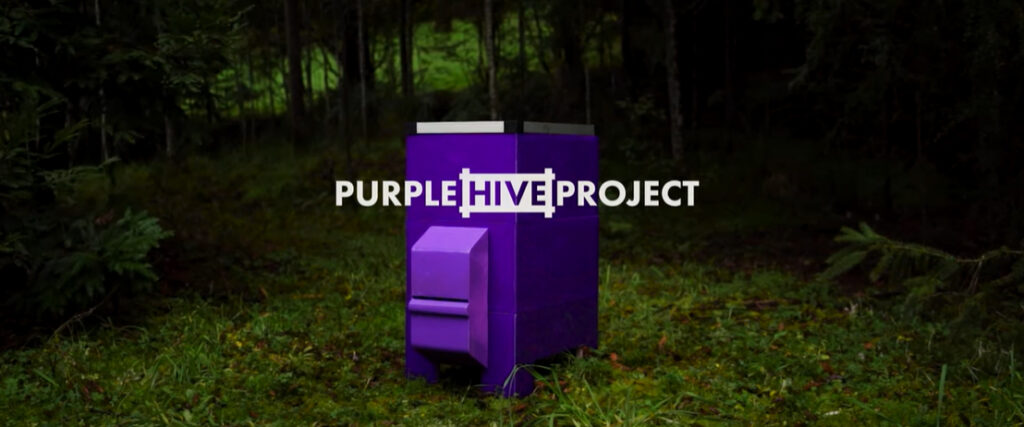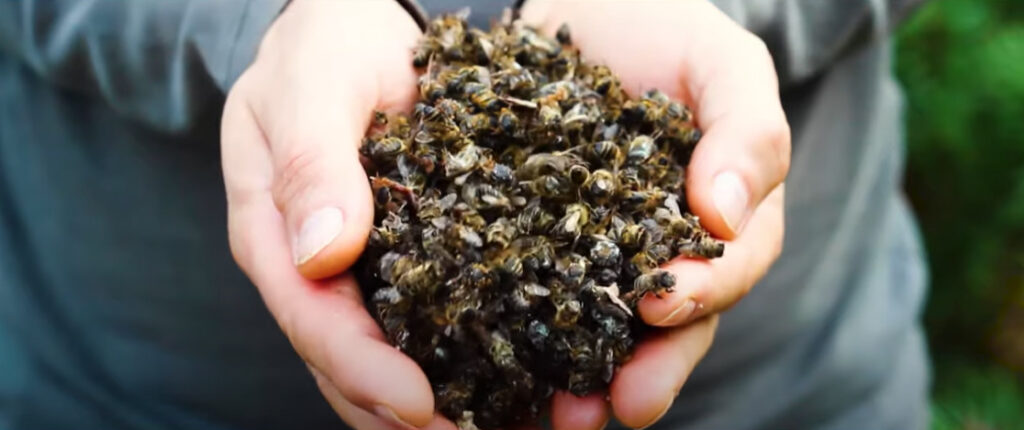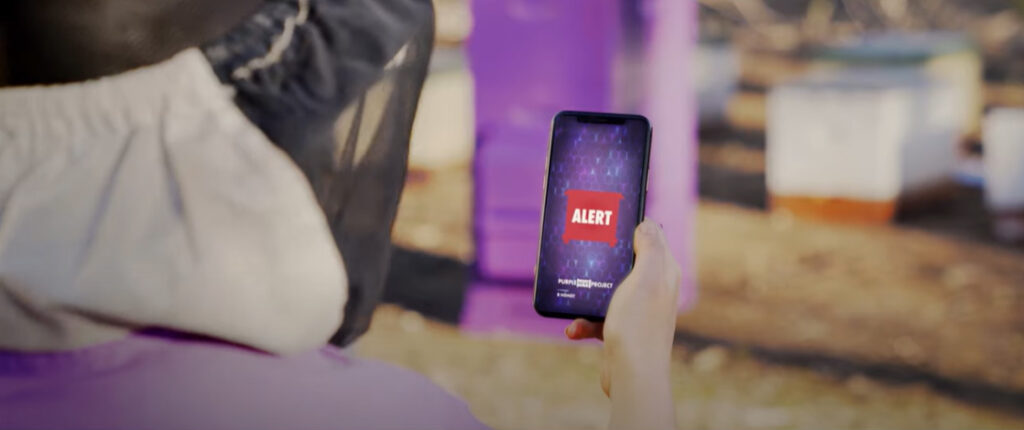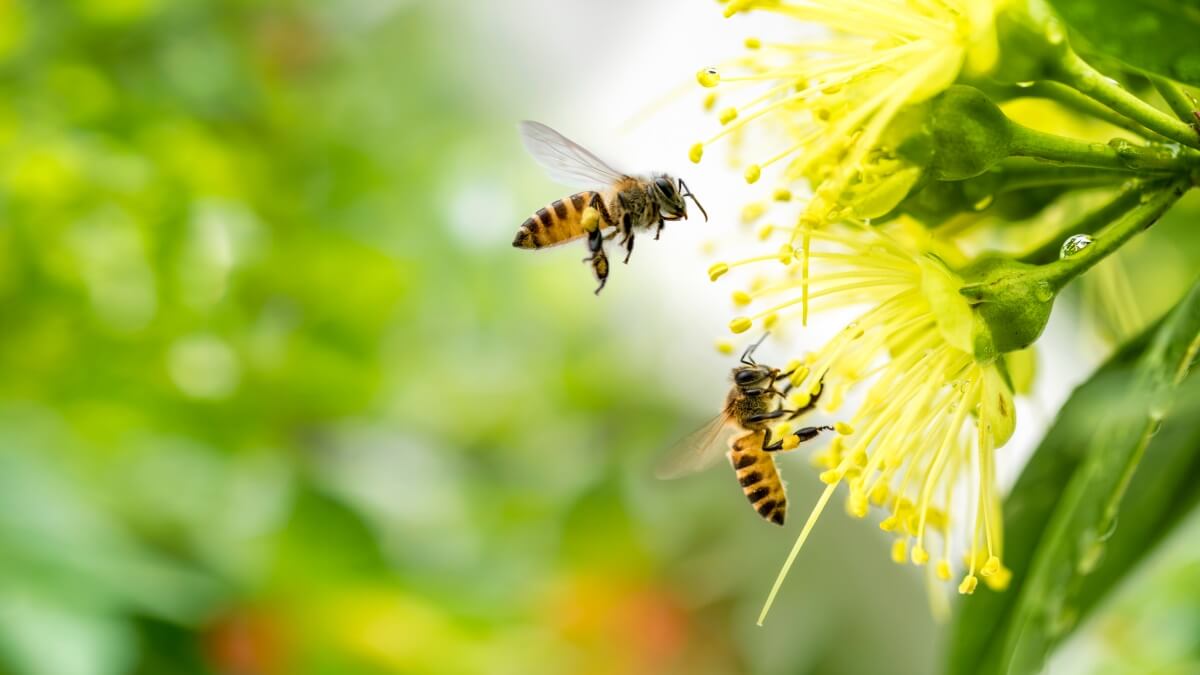Thanks to Xailient’s accurate computer vision AI, bee-killing Varroa Mites can be detected instantly, allowing beekeepers to intervene and stop the spread to other hives. This initiative is called The Purple Hive Project.
Bega is a leading Australian dairy and food company producing cheese, infant formula, Vegemite, peanut butter, and other food staples. With the launch of their B Honey, Bega wanted to ensure that the honey industry remained viable for generations to come by protecting some of our hardest workers, bees. Bega partnered with Xailient to help make this a reality.
Xailient and the Purple Hive Project
Bees must be monitored for Varroa Mite infestations which can destroy hive populations and spread for miles. As the Australian Beekeeper Ian Cane puts it, “Once it’s out, it’s out, so early detection is just crucial.”
To achieve this, tiny cameras equipped with Xailient’s computer vision AI track bees as they enter and exit the Purple Hive, constantly monitoring for bees carrying Varroa. Xailient’s technology, inside the Purple Hive, can detect mite infection rates of 1 in 1,000 in less than an hour with 98% certainty.

Purple Hives run in remote areas thanks to Edge computing. Unlike cloud computing, the Edge doesn’t require an internet connection and allows the solar-powered Purple Hives to function on low-bandwidth/low-reliability networks.
Xailient is uniquely suited to solve small device and low-power needs like those of the Purple Hive. Our breakthrough university research produces computer vision AI that is 100x more efficient than other alternatives on the market, making it practical to deploy for Edge use cases.
Another benefit to use cases like Purple Hive is that Xailient’s platform conveniently handles the entire end-to-end computer vision process, speeding up time to market and letting technology teams focus on business logic.
The video above discusses how Xailient is bringing innovation to the agricultural industry. It talks about the deadly Varroa Mite and explains how Xailient’s accurate computer vision AI, inside Purple Hives, can distinguish a healthy bee from one carrying Varroa.
Early detection of Varroa Mite is key to saving Australian bees

The Varroa Mite kills infected bees, and infestations can spread between individuals and hives. Alarmingly, Varroa populations double every month, depending on conditions such as temperature.
Varroa populations grow fastest during the warmer seasons, and, unfortunately, this also happens to be the time when bees are most active. This facilitates the spread of Mites between hives.
Varroa infects hives globally, but these bee-killing Mites aren’t present in Australia yet.

Worldwide, beekeepers monitor for Varroa and treat infestations with pesticides when a hive exceeds the infection threshold.
In Australia, a system of “sentry hives” (at ports of entry around the country) monitor the arrival of the parasite. If the invasive species is detected, a program of quarantines and hive treatments is intended to stem the spread and eradicate the invader.
Early detection increases the effectiveness and efficiency of Varroa control programs.
How does Xailient protect Australian bees with solar-powered computer vision AI?
Typically, beekeepers monitor Varroa manually, using solar-powered camera systems. Xailient’s computer vision AI also runs on solar power, but Xailient can monitor bees 24/7, 365 days a year, unlike previous initiatives.
Additionally, Edge computing processes data generated by the Purple Hive at the source (at the Purple Hive itself). In cloud computing, data needs to be sent to cloud data centers thousands of miles away. Processing data locally provides critical early detection of Varroa by improving latency issues associated with the cloud.
While Varroa Mite detection is a special use case, the technology and process follow a pattern used in diverse fields such as Retail Analytics, Surveillance, and Industrial Automation.
Camera input is processed by AI software to make sense of what it sees using the process of Object Detection. The resulting data, such as the number of bees, can be used to interpret behavior patterns such as active foraging, just like in retail analytics when cameras are used to measure shopper activity.
The detection of a Varroa Mite can trigger an alert, much like a security alarm in a surveillance use case or defect detection in Industrial Automation.

What makes these cases different is not the process but the specific objects being detected. In Purple Hive, we detect bees and mites, but in retail, we monitor people.
The specialization, therefore, comes from the AI training process. A neural network is trained to detect bees and mites using deep learning techniques. The neural network is then deployed in the same infrastructure that can be used for retail traffic counting, etc.
Xailient’s accurate AI protects Australian bees and Australian beekeepers
Varroa Mites have decimated bee populations overseas, so it’s imperative they’re quickly found when they make their way to Australia.
If Varroa Mites destroy bee populations, Aussie beekeepers lose their livelihoods. Additionally, bees are crucial to our ecosystems, and much of our food source is dependent on them pollinating.
With Xailient’s accurate computer vision AI technology, Mites can be identified immediately, allowing beekeepers to take quarantine measures faster, saving our precious bees.



